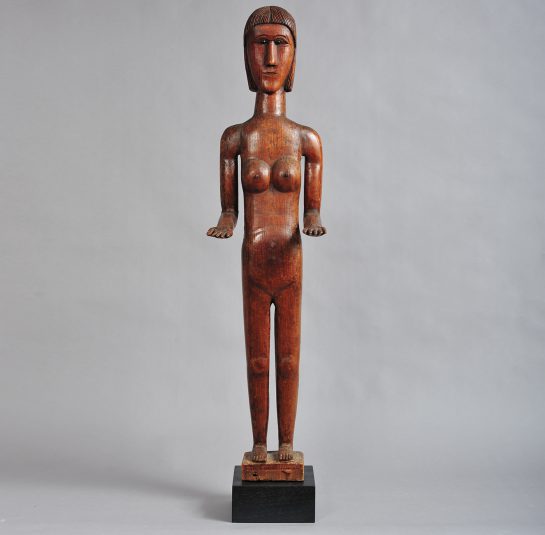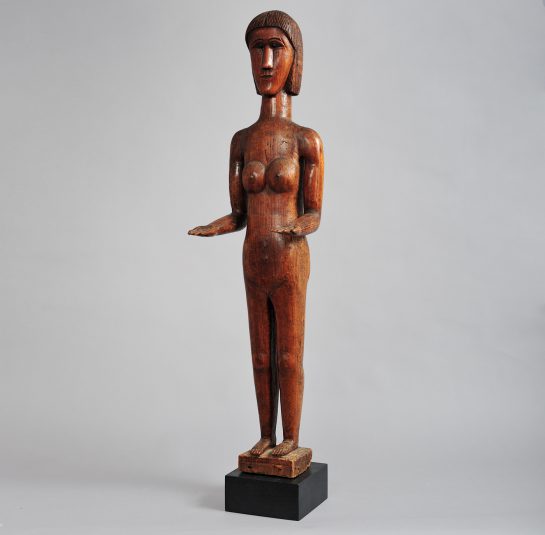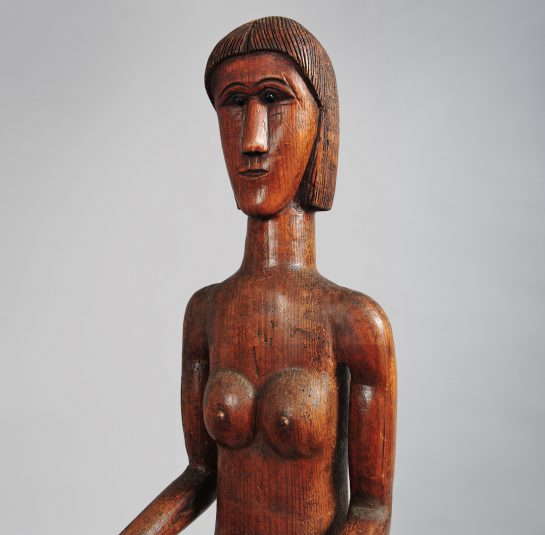Rare Carved Figure of a Woman
SOLD
Probably made by an unidentified African-American artist
Probably second half of the 19th century.
Southern Yellow pine, identified by micro-analysis
Condition: Minor losses to the back right corner of the base. Retains an old varnish finish.
Originally found in coastal Georgia and thought to be carved by an African-American living on one of the barrier islands which were largely occupied by West Africans, including Igbos from what is now Nigeria.
This highly stylized figure relates to other works known by the Igbo tribe yet the elongated nose, small lips and other facial features resemble those of more European or Caucasian descent.
This remarkable, possibly unique piece from the Sea Islands of Georgia was probably carved by an African American in the late 19th or early 20th century, and reflecting the local culture’s continuity with West African tradition as well as its creative hybridity. The form of the piece – with its formal symmetry, upright stature, stiff legs, elongated neck and outstretched arms – bears a remarkable resemblance to the alusi and ancestral figures of the Igbo people (of modern Nigeria) in West Africa. Igbos have a long history on the Georgian Sea Islands, where West African slaves imported by British and American plantation owners lived in relative isolation, developing unique and well-documented culture that preserved many elements of their West African traditions.
This “Gullah Geechee” culture has evolved through its interactions between many West African peoples as well as through contact with both Caucasian and Native American people. The features of this piece seem to reflect this cultural hybridity. Though in form very similar to Igbo alusi/ancestral figures, the facial features and hair of this figure are distinctly divergent from those characteristics of Igbo figures. Some examples of other West African carvings show resemblance in the elongated nose, arched brows and shape of the eyes. The features may also be reflective of Native American features, however, an argument bolstered by the sculpture’s distinctive straight hair as well as the history of cultural interaction between African slaves and their descendants and Native American peoples in the region.
Dimensions: 38 1/4" h x 8 1/4" w (at arms) x 9 1/2" d (from hands). Base: 3" h
Item ID: FA-SO 056




